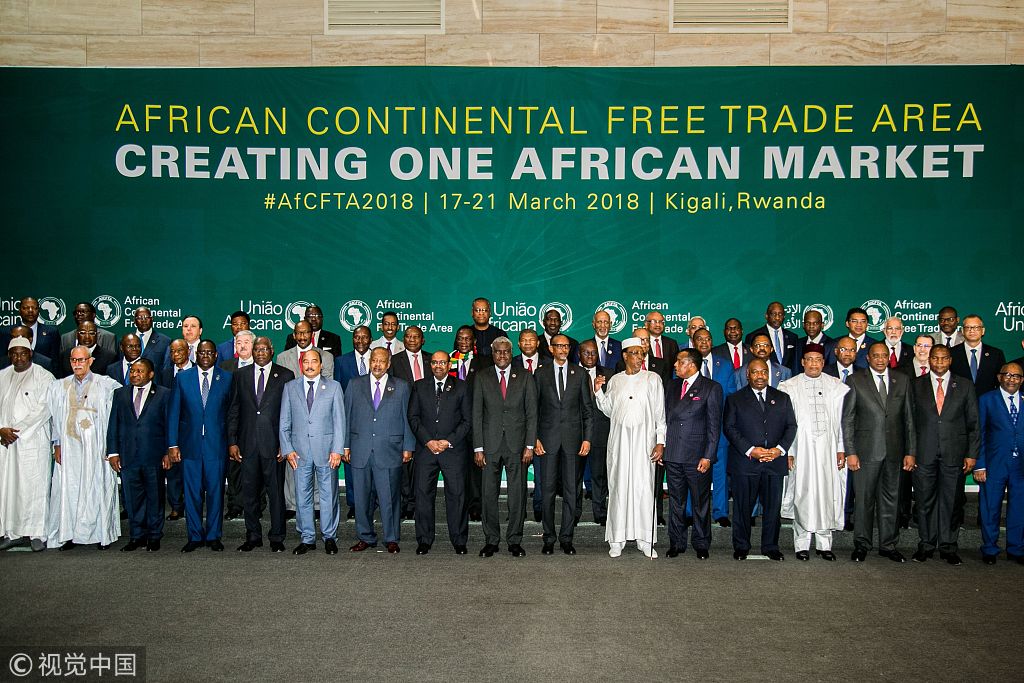Gambia ratifies African trade zone treaty
By LUCIE MORANGI | China Daily | Updated: 2019-04-09 09:21

Infrastructure helps make East Africa most integrated region in the continent
The recent ratification by Gambia's legislature of the Continental Free Trade Area agreement, or the CFTA, means the ambitious initiative has entered the implementation phase.
The agreement, signed by 49 out of the 55 members of the African Union, needed legislative ratifications by at least 22 countries for the treaty to enter into force.
As experts celebrated the milestone across the continent, member states now face the arduous task of deciding how to further open their borders to neighboring countries.
The CFTA seeks to create the largest trade zone in the world. According to the United Nations Economic Commission of Africa, the zone is expected to increase intra-African trade to 25 percent from the current level of 15 percent to 18 percent and to remove tariffs on 90 percent of goods.
Latest data from the 2019 African Regional Integration Index still shows suppressed levels of intratrade. The report, published by the UN commission, reveals that three-quarters of intra-African exports are concentrated in just 13 countries. South Africa captures 45 percent of that share.
The report also shows that the Southern African Development Community has recorded the highest intra-trade in Africa, with South Africa being the most integrated country on the continent. The East African Community continues to be the most integrated region supported by enhanced infrastructure network.
Meanwhile, integration in services, contributed more than 53 percent to the continent's GDP, but ratification of the protocol on the free movement of people has been slow, despite the 2016 launch of the Common Electronic Biometric African Passport, and the Africa Union's Protocol on Free Movement of Persons.
Leila Mokadem, country manager and resident representative in Morocco for the African Development Bank, said that despite the "tremendous" political support for the agreement, major challenges lay ahead. This is in terms of implementation and pushing the agenda forward to meet the goal of increasing intra-African trade.
Challenges such as weak productive capacity, high production costs, large infrastructure deficits and other challenges that affected Africa's competitiveness abound. This is compounded by the number of small markets and 16 landlocked countries.
"We cannot gloss over the challenges, but it is important to underscore the fact that it cannot be business as usual if Africa is to progress," she said.
Stephen Karingi, director of regional integration at the Economic Commission of Africa, said his agency together with the African Union have developed guidelines of the implementation of the CFTA according to individual countries' national strategies.
"We are assisting 15 countries to draw up their implementation strategies. This has been developed based on the macro of the economy, the economic profile and its comparative advantages. So that when a country does its scheduling on the areas it wants to open to the other economies, it understands its needs."
Karingi said that the landlocked countries depend heavily on trade to accelerate economic growth. African countries make up 33 of the 47 listed in the Vienna Protocol for landlocked countries, and also 50 percent of the land locked developing countries globally. "These countries need capacity development and access to markets to meet their development goals," he said.
He recommended the implementation of e-commerce as a way to overcome some trade-related barriers such as distances. This would need several other obstacles to be tackled such as lack of postal services and logistics services, lack of credible means of payment and low rates of computer and internet literacy.
The CFTA is expected to remove trade barriers, increase investments in industrialization and infrastructure expansion and consequently create jobs for the world's fastest growing labor force.
























